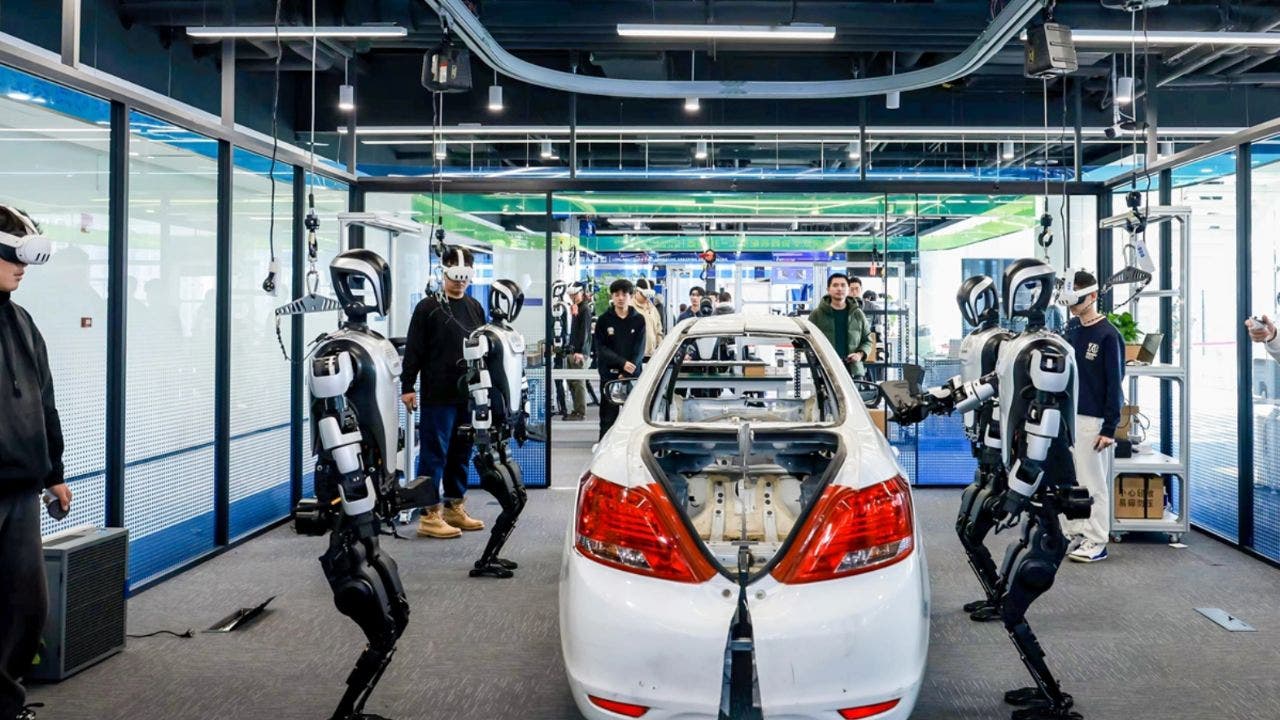China launches center to train 100-plus humanoid robots simultaneously

Shanghai has officially unveiled its first heterogeneous humanoid robot training center, known as the Humanoid Robot Kylin Training Ground. This marks a significant milestone in China’s robotics development and showcases the country’s commitment to becoming a global leader in robotics and artificial intelligence.
The National and Local Co-Built Humanoid Robotics Innovation Center has launched this groundbreaking training facility, pushing the boundaries of robotic training. Spanning over 53,800 square feet, the state-of-the-art complex is capable of training more than 100 humanoid robots simultaneously. With over a dozen specialized training scenarios, including welding, manufacturing, and automotive testing, the facility is at the forefront of robotic innovation.
The humanoid robots being trained at the center have demonstrated exceptional proficiency, with a success rate exceeding 90% in various tasks. From organizing desks and sorting items to operating complex equipment, these robots showcase the potential for widespread application across multiple industries. This achievement highlights the rapid progress being made in humanoid robotics and underscores China’s growing prominence in artificial intelligence and automation technologies.
The training facility plays a crucial role in addressing various challenges faced by China, including global tech competition and an aging society. By 2027, the center aims to train 1,000 general-purpose robots simultaneously and collect 10 million high-quality physical data entries through collaborations with local robot manufacturers.
The center is also preparing to introduce the 2.0 version of its humanoid robot, “Deep Snake,” which will feature advanced technologies like linear joint actuators for smoother and more precise movements. These innovations will enhance the versatility and performance of humanoid robots, solidifying China’s leadership in the robotics industry.
The Chinese humanoid robot market is experiencing exponential growth, with projections indicating a substantial expansion in the coming years. By 2025, the market is expected to reach $2.3 billion, growing to about $11.8 billion by 2030. This growth extends beyond industrial applications, with plans for the first World Humanoid Robot Sports Games and a marathon-running robot named “Tiangong” set to compete in April.
China’s investment in the Humanoid Robot Kylin Training Ground is a strategic move to reshape industrial capabilities, address societal challenges, and position the country at the forefront of global innovation. As humanoid robots continue to evolve, their impact on various sectors and human-machine interaction will be closely watched by the world.
For more tech tips and security alerts, subscribe to the free CyberGuy Report Newsletter on Cyberguy.com. Let us know your thoughts on humanoid robots and their potential impact on tomorrow’s workforce challenges.



